Watsonia lepida
Watsonia lepida N.E.Br
Family: Iridaceae
Common names: lonesome watsonia (Eng.); khahla (Sesotho)
Introduction
Watsonia lepida has showy pink flowers in midsummer, it is a summer-grower from the Drakensberg Mountains, that occurs as scattered individuals amongst grasses, in full sun and well-drained soil, and that is the way it is best displayed in the garden.
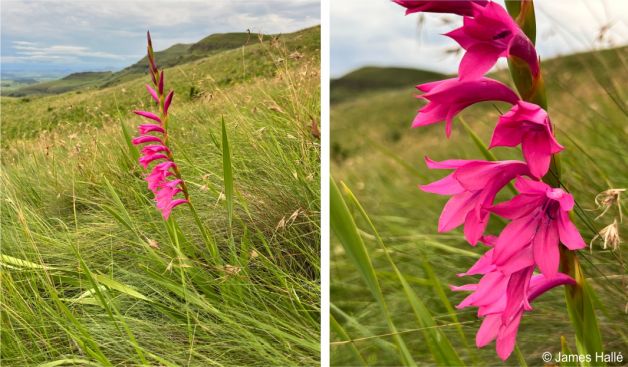
Description
Description
Watsonia lepida is a summer-growing, tuberous perennial geophyte, that grows up to 650 mm tall. Plants are usually solitary, occasionally forming small clumps. The plant produces 3 or 4 leaves that are linear to lanceolate, 5-15 mm wide, and have a prominent midrib and strongly thickened margins. There are also leaves that occur on the flowering stem that are overlapping and sheath the stem towards the lower part of the plant.
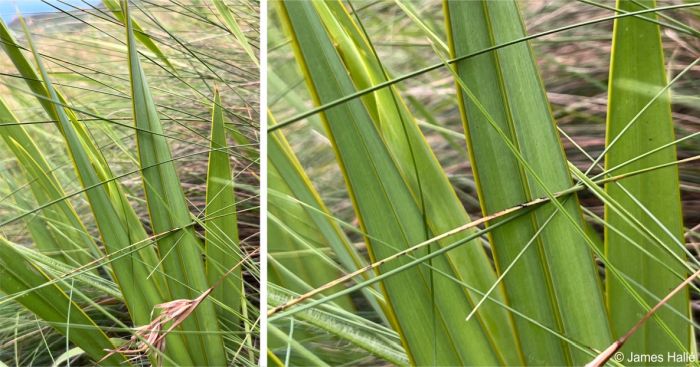
It has spikes of funnel shaped, bright pink to purplish pink flowers in midsummer (November to February), occasionally up to winter (July). About 22 flowers are crowded into the upright inflorescence, at the tip of the sturdy and erect stem, which grows up to 650 mm tall. The bracts are narrow, about 25 x 12 mm. Fruit is a narrowly ovoid capsule containing 5 x 2 mm seeds.
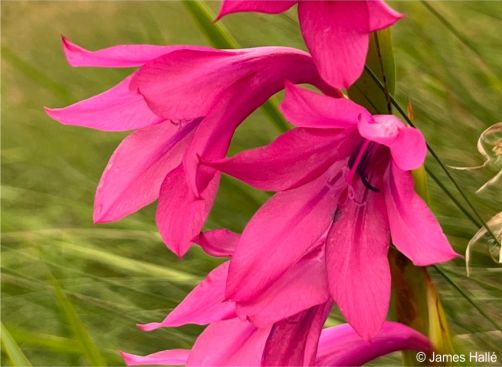
Watsonia lepida is often confused with Watsonia confusa, which is a larger, more robust plant up to 1.5 m tall with broader bracts up to 35 x 18 mm wide.
Conservation Status
Status
According to the Red List of South African Plants, Watsonia lepida is assessed as Least Concern (LC).
Distribution and habitat
Distribution description
Watsonia lepida is endemic to southern Africa, occurring in South Africa and Lesotho. In South Africa it is recorded as growing wild in the Drakensberg, from Richmond in KwaZulu-Natal to Harrismith and Ficksburg in the eastern Free State, growing in grassland, in rocky areas at 1 500–1 980 m. In Lesotho it is recorded in the Maluti Mountains.
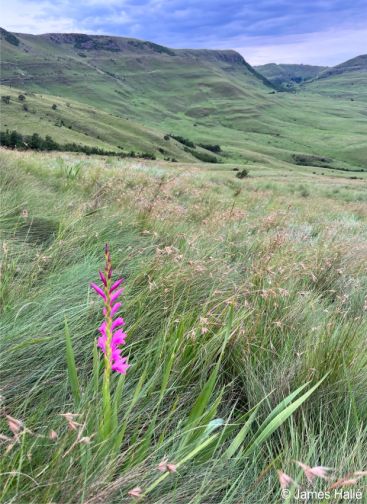
Derivation of name and historical aspects
History
The genus Watsonia was named by Philip Miller of Chelsea after his friend Sir William Watson (1715-1787), a London physician and naturalist. The species name lepida, meaning ‘charming’, ‘pleasant’, ‘elegant’, ‘neat’, was given to the plant by N.E. Brown in 1931. The Sesotho name khahla means ‘the flower which pleases’, referring to its attractive flowers.
Watsonia lepida belongs to the Iridaceae, the iris family, comprising of 66 genera and around 2 200 species. This family is distributed nearly worldwide, but it is most abundant and diversified in Africa. Most species are native to temperate, subtropical, and tropical regions. A few species grow in swampy locations, and a few withstand the rigours of subarctic conditions. The family contains several economically important ornamentals, including Gladiolus and Iris.

Ecology
Ecology
The shape and colour of Watsonia lepida flowers is remarkably similar to those of the orchid species Disa pulchra and both are pollinated by the long-tongued fly, called Philoliche aethiopica. The watsonia flowers produce nectar and the long-tongued flies visit open flowers to collect the nectar, transferring pollen from one flower to another in the process. The Disa pulchra flowers however do not produce nectar, it mimics the watsonia in order to trick the pollinator into visiting and pollinating its flowers. Birds also visit Watsonia lepida flowers to feed on the nectar. Seeds are light and easily dispersed by wind, landing nearby the parent plant.
Fire is an ecological process that influences the maintenance of vigorous growth of Watsonia lepida in the wild and this species produces masses of flowers after a fire.
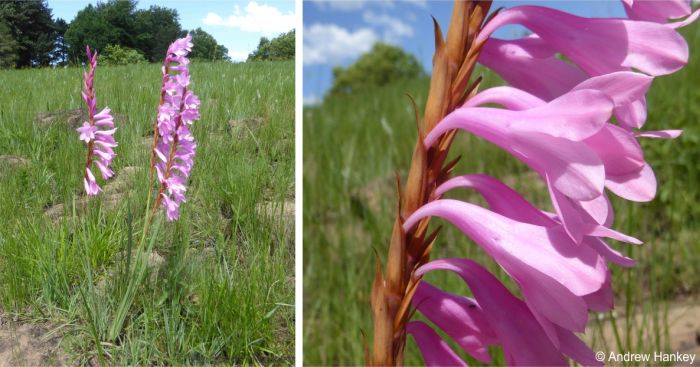
Uses
Use
Watsonia lepida has the potential to be used as a cut flower, due to its long-lasting flowers and long blooming period, flowering can last for about three weeks or more. Leaves can be plaited to make rope. Plants are traditionally used to treat diarrhoea in calves, but there is no record of the species being used to treat people.
Growing Watsonia lepida
Grow
Watsonia lepida grows and flowers in summer, and grows naturally in the high altitude summer-rainfall region of the eastern mountainous part of South Africa where the climate is cold and dry in winter, and warm and rainy in summer. It is ideally suited for grassland and highveld gardens because it withstands frost. In the garden, the corms can be left in the ground during winter, as long as the soil is well-drained, or lifted after flowering, and replanted in spring. It grows very well in well-drained soil in a sunny rockery that experiences high summer temperatures. It is also suitable for containers.
Watsonia lepida can be propagated from seeds sown in spring or early summer, in a well-drained medium of 1 part sand and 2 parts compost, at about 3-5 mm deep, in seed trays of not less than 10 cm deep, to allow sufficient root development. Seeds can be slightly covered with fine compost and should be kept moist at a warm temperature. Seeds will germinate from two to three weeks and watering must be consistent during the growing period.
The species also can be propagated by division, in which any offsets produced can be removed and replanted in spring. Plant the corms in a well-drained loamy soil or a mixture made up of 2 parts coarse sand and 2 parts bark-based potting soil, water thoroughly, and keep moist until established, whereafter water moderately.
References
- Duncan, G. 2004. Watsonia hysterantha. (Iridaceae). PlantZAfrica. Online. http://pza.sanbi.org/Watsonia-hysterantha.
- Goldblatt, P. & Manning, J.C. 2020. Iridaceae of southern Africa. Strelitzia 42. South African National Biodiversity Institute, Pretoria.
- Hallé, J. 2023-Dec. Observation of Watsonia lepida, Dr Nkosazana Dlamini Zuma Rural, KZN. iNaturalist. Online. https://www.inaturalist.org/observations/194886552.
- Hankey, A. 2016. Ledebouria lepida (N.E.Br.) S.Venter. (Hyacinthaceae). PlantZAfrica. Online. https://pza.sanbi.org/ledebouria-lepida.
- Hankey, A. 2017-Dec. Observation of Watsonia lepida, Umgungundlovu, KZN. iNaturalist. Online. https://www.inaturalist.org/observations/9216996.
- Johnson, S.D. 2000. Batesian mimicry in the non-rewarding orchid Disa pulchra, and its consequences for pollinator behaviour. Biological Journal of the Linnean Society 71(1):119-132.
- Moteetee, A. & Van Wyk, B-E. 2006. Sesotho names for exotic and indigenous edible plants in southern Africa. Bothalia 36(1):25-32.
- Plant Genesis. Growing Watsonias. https://www.plantgenesis.co.uk/PBCPPlayer.asp?ID=1721857. Accessed on 2024/09/08.
- Pooley, E. 1998. A field guide to wild flowers of Kwazulu-Natal and the eastern region. Natal Flora Publications Trust, Durban.
- Raimondo, D., Von Staden, L., Foden, W., Victor, J.E., Helme, N.A., Turner, R.C., Kamundi, D.A. & Manyama, P.A. (eds) 2009. Red list of South African plants. Strelitzia 25. South African National Biodiversity Institute, Pretoria.
- Wentzel, J. n.d. Watsonia lepida. Wildflower Nursery, indigenous plant database. Online. https://wildflowernursery.co.za/indigenous-plant-database/watsonia-lepida/. Accessed on 2024/09/08.
Credits
Mashudu Tshitereke
KwaZulu-Natal National Botanical Garden
October 2024
Acknowledgements: images by Andrew Hankey and James Hallé.
Plant Attributes:
Plant Type: Bulb
SA Distribution: Free State, KwaZulu-Natal
Soil type: Sandy, Loam
Flowering season: Early Summer, Late Summer
PH: Acid, Neutral
Flower colour: Pink
Aspect: Full Sun
Gardening skill: Average
Special Features:
Horticultural zones









Rate this article
Article well written and informative
Rate this plant
Is this an interesting plant?
Login to add your Comment
Back to topNot registered yet? Click here to register.